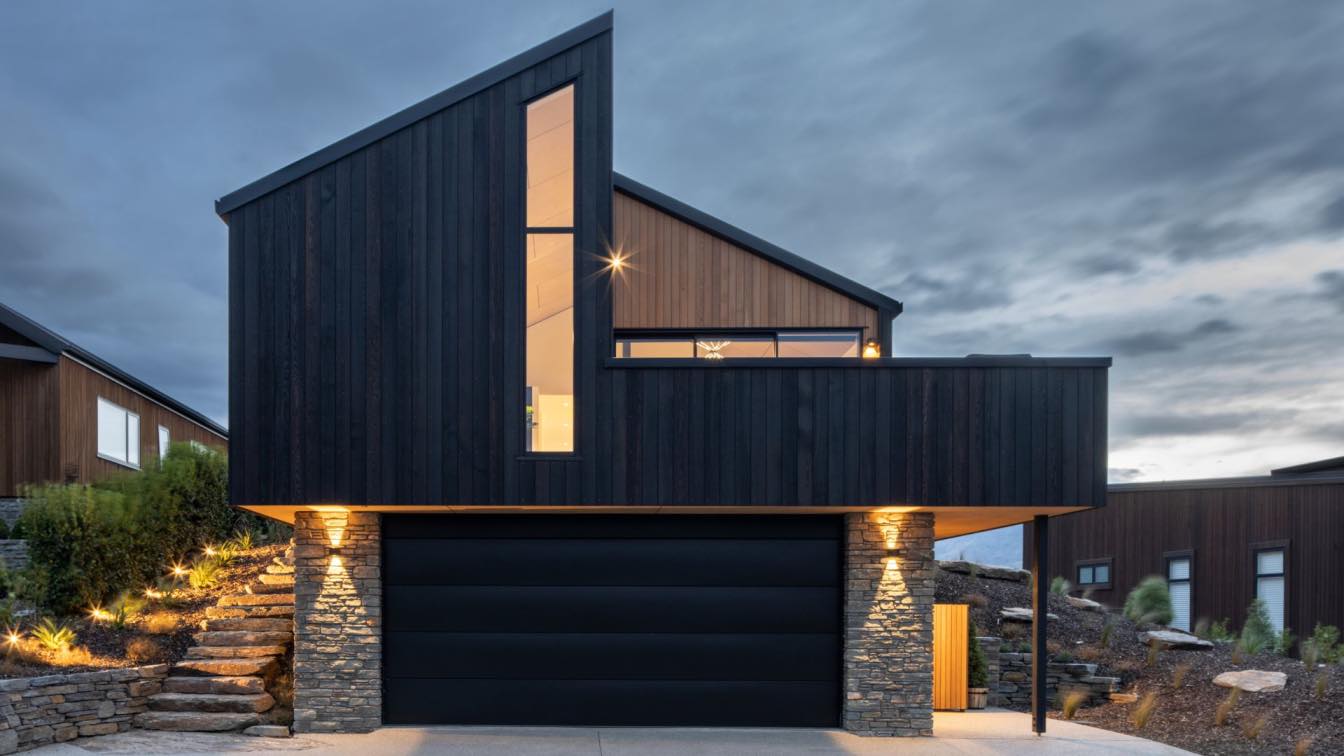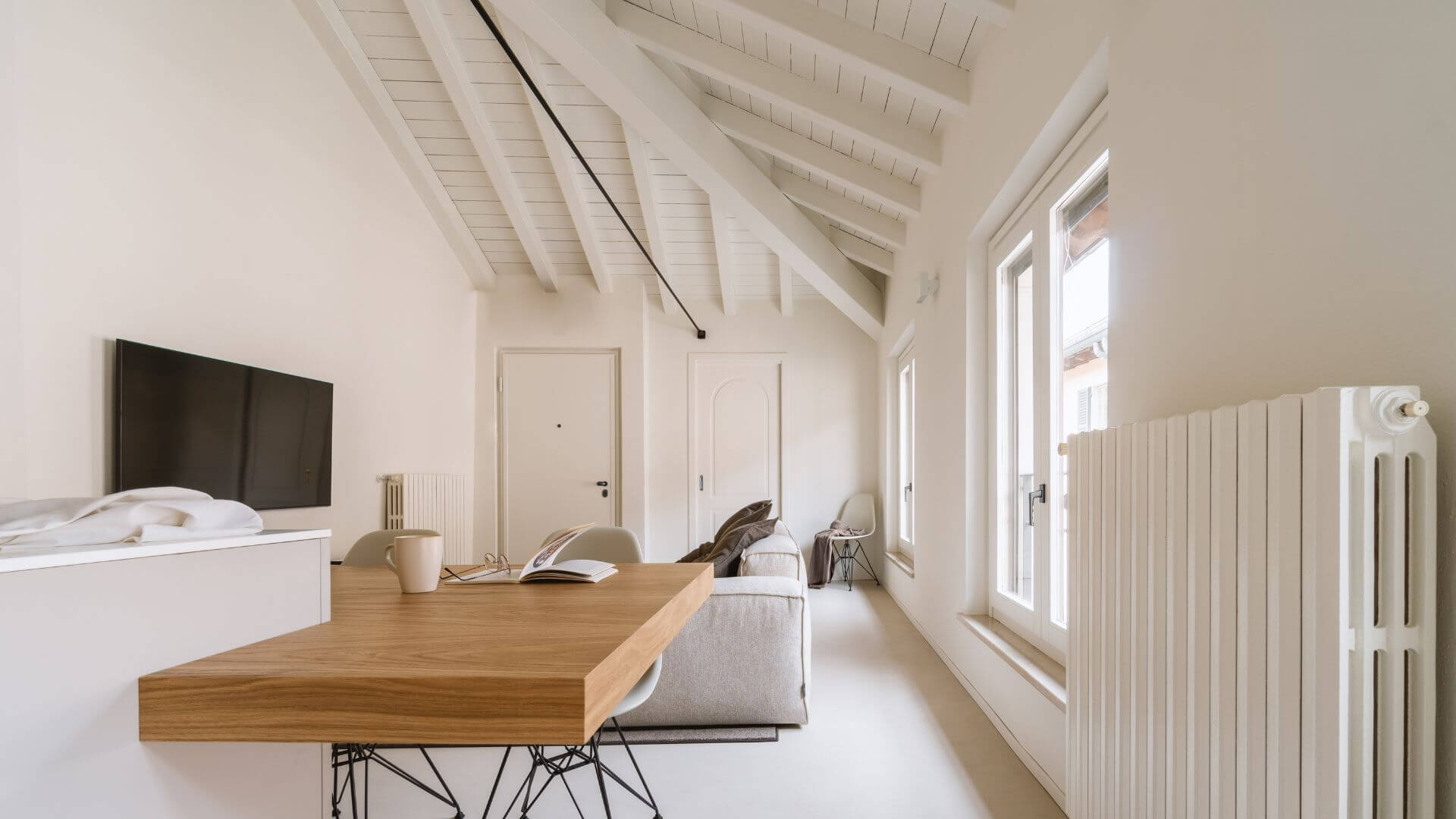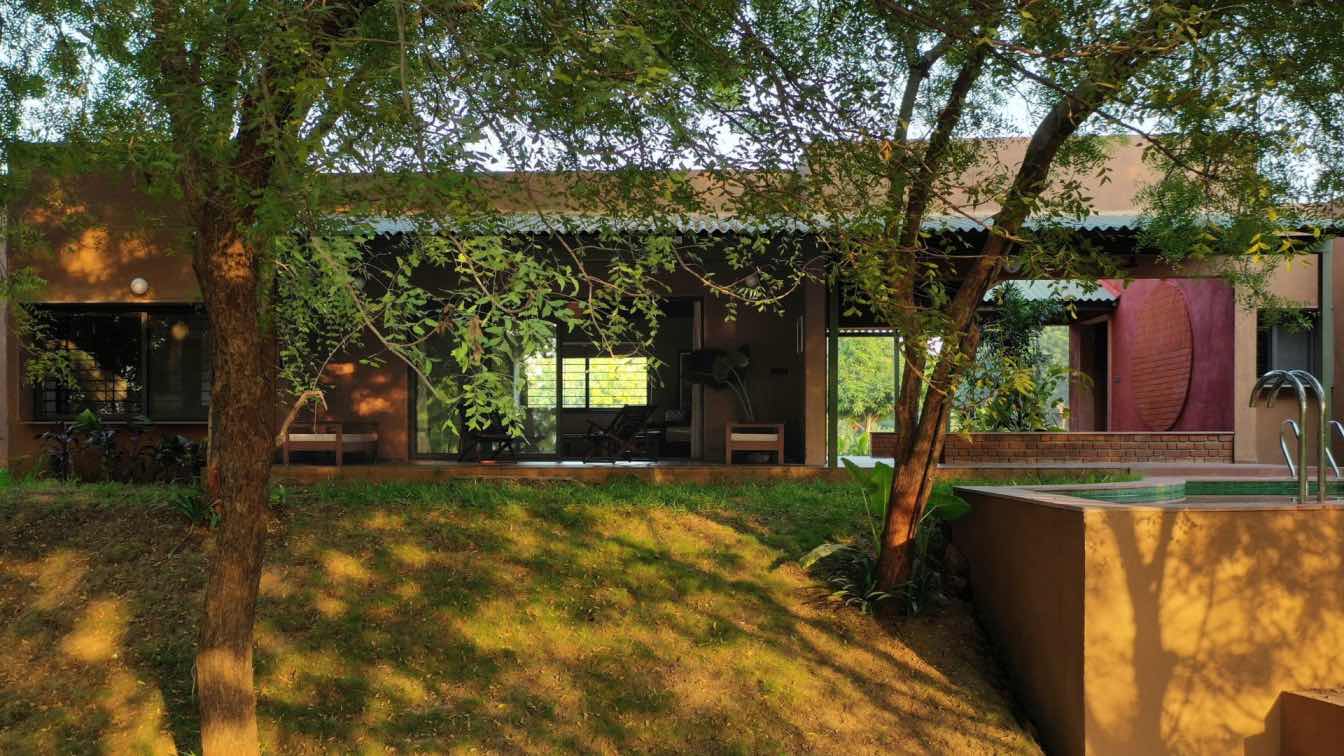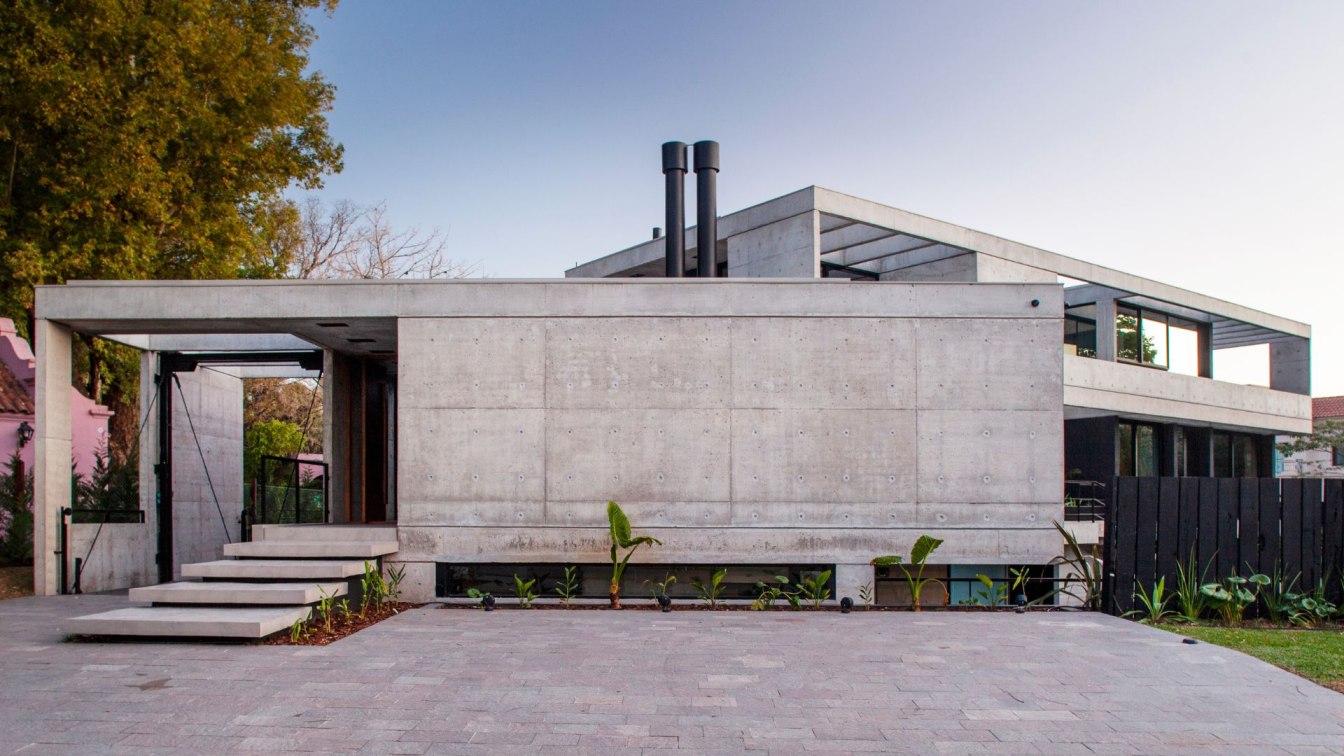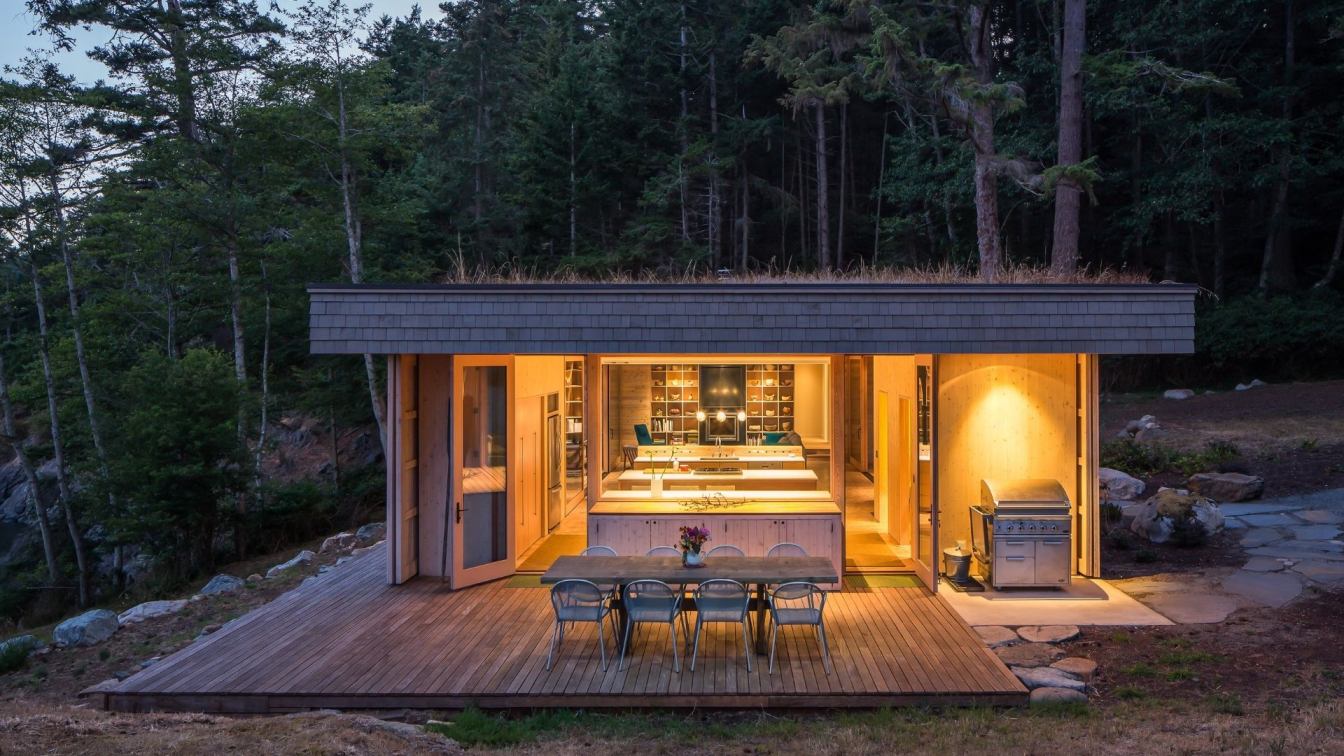First Light Studio: The built form draws its inspiration from the natural landforms and the historical process of shifting rock forms that created the Remarkable Mountain range that provides the backdrop to Jacks Point. A simple gable form is shifted along its ridge line to create a bold, sharp, form reminiscent of the jagged mountains beyond. This tectonic shift of the form, similar to that of a broken rock, provides rich sheltered outdoor living spaces in the voids created by the form.
The gable begins humble at a single level to the west, where the site meets the reserve, minimising the impact of the built form at the highest point of the site. As the site falls naturally back towards the road this single level form extends over a natural schist plinth that forms the garage below. Nestled into the natural contour of the site the garage also sits backs from the envelope of the house above, recessed in both form and appearance.
The building is sited to maximise natural light, and utilise the existing vehicle crossing from the street. Careful placement of windows and doors are designed to capture selected views while maintaining privacy from both the built and unbuilt neighbouring properties. A small footprint of 127m2 allows the property to sit safety within all building restrictions and away from the street edge. The outdoor living is raised above street level and wrapped in a solid timber balustrade to provide both privacy and minimise a visual connection to the street edge.

A simple pallet of natural and recessive materials mimic the surrounding natural and built environment. These include locally sourced schist, stained cedar, and colorsteel. Windows and doors are recessed within the claddings of stained timber and schist. Derived from the surrounding environment the landscape design provides a low maintenance and sympathetic planted environment to this home, blurring the street and boundary edges through carefully selected and approved species. Utilities are screened using a combination of slatted timber as an extension of the building form, and landscape planting.
Exterior lighting will be limited to wayfinding on the south steps, and exterior doors. The lighting will be indirect low intensity LED to minimise light pollution.
Oriented for the sun, with an insulated concrete floor, thermally broken double-glazed joinery and a higher-than-code thermal envelope means the house will maintain a comfortable temperature without much need for active heating or cooling throughout the year. Appliances and lighting fixtures were selected for their low energy consumption.
Low-maintenance, durable, locally abundant materials have been utilised throughout. Feature materials are timber, on the interior, untreated plywood and the exterior with sustainably sourced cedar and locally sourced schist. Material use has been minimised through a compact building footprint that is cleverly laid out to feel like a much larger home.

Jury's comment: Beneath the Remarkables Range is a home approaching peak perfection. This three-bedroom residence, with its assured sharp lines and materials in natural hues, reflects the landscape it inhabits. Schist steps and basement cladding anchor the 174sqm house to its impressive site. Contrasting dark and golden cedar cladding serve as a link to the light and shade of the mountains, while the roofline traces the lines of the peaks themselves. Natural hues also feature indoors. Step inside and you’re greeted with negative-detailed birch plywood in the foyer, stairwell and some ceilings. The winding stairs are crafted in solid oak.
There’s more timber – American white oak – in the kitchen island, one end of which doubles as a dining table. This area opens up to hardwood decking that’s positioned for shelter and stellar Central Otago views. Down the hall, which is bathed in natural light from the south-facing door, the family bathroom has polished concrete and tiled showers. The main bedroom, with a soaring ceiling in birch plywood, has a walk-in wardrobe, ensuite and views. There are two more bedrooms, including a bunkroom with custom-made birch-ply beds.






















